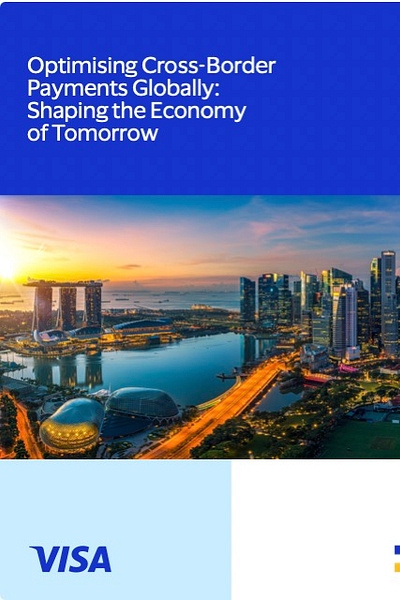Optimizing Cross-Border Payments In APAC, No Easy Task for Visa
Cross-border innovations in APAC focus on RTPs not cards.
This is my daily post. I write daily but send my newsletter to your email only on Sundays. Go HERE to see my past newsletters.
HAND-CURATED FOR YOU
Visa wants in on APAC’s projected cross-border payment market of $250 trillion by 2027.
The problem is that all of the new technology is real-time payment (RTP)-oriented and unsuitable for cards.
Nonetheless, kudos to Visa for this honest report, which recognizes that technological or regulatory changes will not make life much easier for Visa and cards.
They will, however, make it easier for cross-border QR-based payment systems that run on RTP networks which are the focus of all new trials and experiments.
That is little comfort to Visa, which was forced to launch QR payments in APAC last year out of fear of being completely left out.
Yet QR codes with Visa’s 3% merchant fee aren’t going to compete with real-time fast payment systems with 0.02% or no fees. Still, I credit Visa for finally breaking down and using QR and finding international partners.
Even Visa acknowledges real-time payments, stating that “Countries such as India and South Korea are setting benchmarks in domestic instant payment systems, showcasing innovative approaches that are inspiring other regions to advance their capabilities.”
When did Visa ever set a benchmark in payments? Maybe in 1995?
You are witnessing a successful overthrow of US payment tech occur right before your eyes, though it seems to have escaped the notice of many.
Yes, cross-border payments are changing, and I believe that Visa has a future.
The problem is that Visa must match the low costs of local competition to participate, which will be a very bitter pill for them to swallow.
👉 Changing Cross-Border Payments
🔹 Technology Driving Change
Real-Time Transaction Monitoring: AI systems continuously oversee transactions, rapidly detecting anomalies and fraud patterns, enabling proactive intervention and enhancing customer trust.
Fraud Prevention and Risk Management: Predictive analytics anticipate and adapt to fraudulent behaviour with increasing precision.
Efficiency Gains: AI automates routine processes like compliance checks, cutting time and costs significantly.
🔹 Streamlining Regulations
For emerging economies, the G20 Cross-Border Payments Roadmap provides an essential foundation for integrating into global markets, enabling small and medium enterprises (SMEs) to compete more effectively and access new customer bases.
Regional collaborations translate global frameworks into practical solutions.
ASEAN has lead with connections made between Singapore’s PayNow and PromptPay in Thailand and DuitNow in Malaysia.
ASEAN’s payment innovation will continue to advance with Project Nexus, enabling real-time, low-cost transfers across key member countries14, and
by 2025, regional QR code integration will streamline transactions.
🔹 Unlocking the full potential
Blockchain-Based Liquidity Solutions: Blockchain-powered platforms can provide real-time liquidity in key currencies, enabling 24/7 cross-border settlements.
Tokenised Deposits for Cross-Border Transactions: Institutions are exploring using tokenised deposits to streamline fund settlements.
Expanded Global Payment Networks: Partnerships between financial service providers and digital payment platforms are enabling businesses to access comprehensive cross-border payment solutions, integrating
global networks with local payment infrastructures.
🔹 Collaboration
Financial institutions, fintech companies, and regulatory bodies must align their efforts to create an efficient, secure, and scalable ecosystem of the future.






